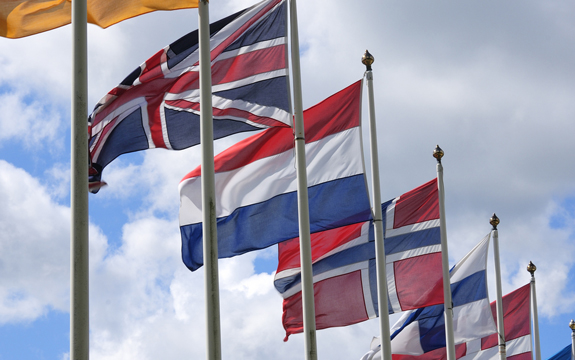A European Union-Australia trade deal may heal a troubled history

In Summary
- Analysis for The Conversation, by Associate Professor Bruno Mascitelli, Faculty of Health, Arts and Design.
For decades, trade relations between the European Union and Australia have been marked by sourness and rancour. So Prime Minister Malcolm Turnbull’s announcement last month that Australia will begin working towards a “comprehensive and high-quality” Free Trade Agreement with the EU marks a gradual thawing in relations.
An agreement will ensure trade and investment relationship reaches its full potential by removing trade barriers and expand service linkages and investment ties, while enhancing “regulatory cooperation in specific sectors of interest to business”. The process is expected to take between five and seven years.
The troubled relationship dates as far back as 1975 when the British first entered the European Community (as it was then named), shutting out Australia’s primary products from the UK.
Relations were already strained by the direct subsidies to specific agricultural products and tariffs introduced under the European Common Agricultural Policy (CAP) in the late 1960s. These two events defined Australian EU trade discussions for decades.
Disagreements over market tariffs and agricultural subsidies escalated over time and became a serious international issue. They were further inflamed by personal antagonism between then-Prime Minister Malcolm Fraser and the European Commission President, Roy Jenkins.
As Minister for Special Trade Negotiations, John Howard found Australia was effectively shut out of the EU. His summary of his 1977 Brussels visit was of “seven weeks tramping round Europe, not making a great deal of progress”.
The concern over agricultural subsidies between Australia (and other agricultural producing nations) on the one hand, and the European Community, USA and Japan on the other, led to the creation of the Cairns Group in 1986 (chaired by Australia).
The Cairns Group called for the total elimination of government subsidies for agriculture. Alongside the agricultural issues which continually featured in official discussions between Australia and the European Community, other disputes emerged in the 1990s. One source of irritation was Foreign Minister Alexander Downer’s refusal in 1996 to entertain the insertion of a human rights clause into EU Treaties.
But since the 2000s the trade agenda for both the EU and Australia has changed significantly. Partially as a result of the stalled WTO Doha Round, the trade agenda and search for liberalisation took on new forms. A new phase of regional and bilateral agreements opened, which both the EU and Australia began to pursue.
Moreover on the EU side agricultural subsidies took on a slightly different emphasis and Australia began looking at its export destinations with bilateral agreements.
In addition the Australian economic landscape saw the rise of mining and iron ore especially with a thirsty Chinese market which refocused much of Australia’s approach towards trade. Australia and the EU began to enter a new phase of trade agreements where negotiations worked on the best possible outcome - not necessarily the aspirational objective.
The new lease of bilateral arrangements with trade partners leading to the milestone US Free Trade agreement in 2005 taught Australia some new limits and expectations for trade agreements. The mainly-ignored Mortimer report of 2008 referred to the desirability of FTAs, including a European Union one.
Equally agriculture in Australia has taken on a lesser dimension and the agricultural lobby has seen some downscaling with the decline of influence of the National Party as a Coalition partner.
It was the Abbott government which provided some of the circuit breakers with the EU trade agenda, including a possible EU FTA as an election agenda item as early as 2012. An important change was the elevation of Andrew Robb as trade minister, the first time since the 1949 Menzies government that a Liberal rather than National has held the portfolio.
So how is an FTA between the EU and Australia possible today? Both sides have moved on from their entrenched positions, recognising there was little to gain.
Robb has referred to this new possible FTA as a “missing piece” in Australia’s significant array of trade agreements that includes deals with China, Japan and South Korea) and most recently, the Trans Pacific Partnership agreement.
EU and Australian representatives today go to great lengths to highlight the trust and shared values they have in common on security, human rights and foreign policy. The reality is that the few economic advantages can be squandered.![]()
Written by Bruno Mascitelli, Associate Professor, European Studies, Swinburne University of Technology. This article was originally published on The Conversation. Read the original article.

